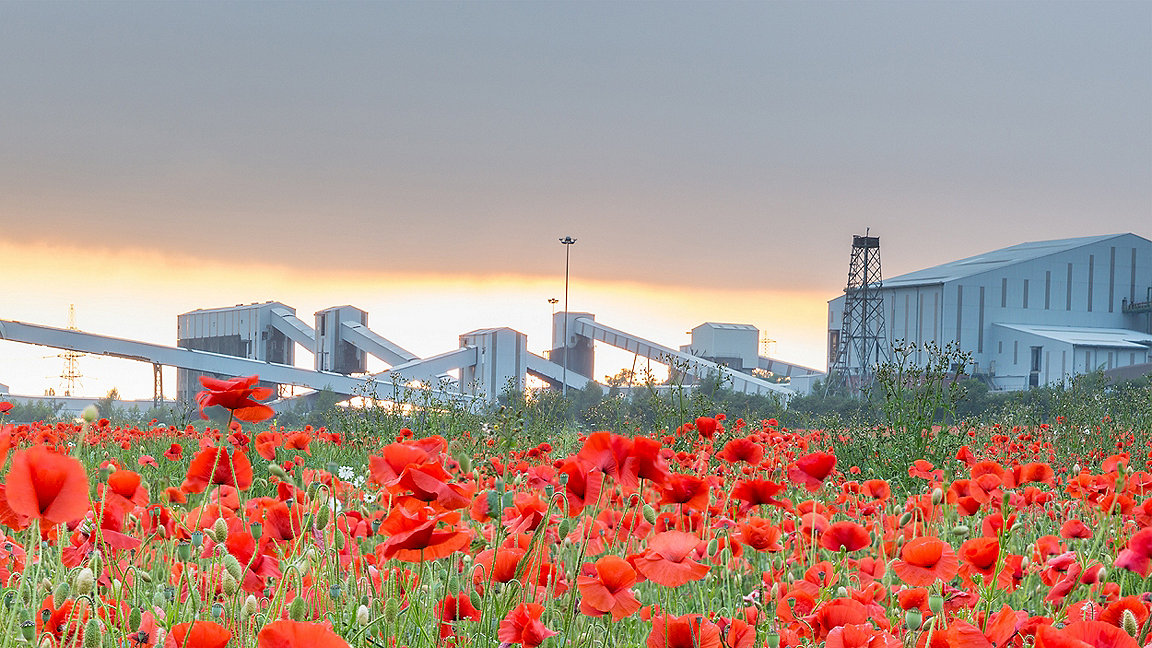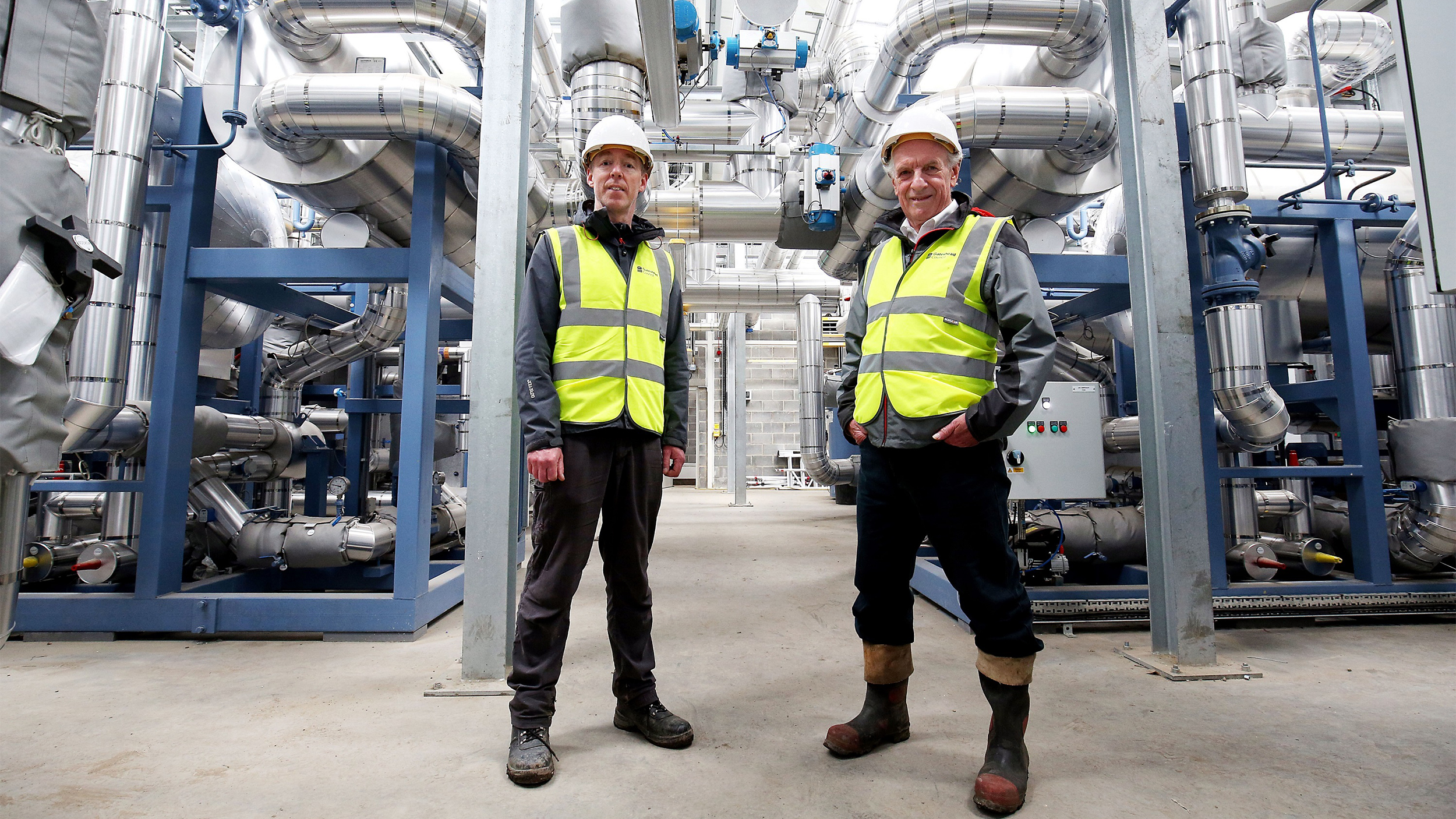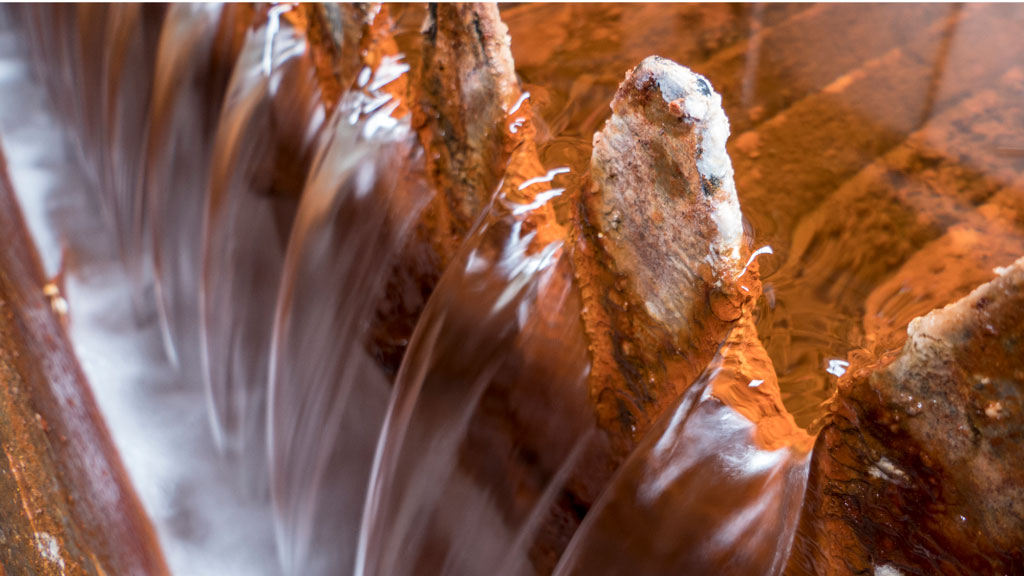
Kellingley Colliery, North Yorkshire
Heating homes and businesses across Britain accounts for around half our energy demand, and most of this heat is derived from fossil fuels. Ensuring continuity and security of heat supply from low-carbon alternatives is therefore a significant challenge.
However, non-departmental government agency the Coal Authority has recently worked with one forward-thinking local authority, which has demonstrated how a disused mine filled with water can provide 6MW of low-carbon heat for a newly extended heat network. This is currently the largest mine water geothermal heat network in Britain.
Coal mining in figures
- There are around 23,000 disused deep coal mines in Britain.
- Britain's last deep coal mine, Kellingley Colliery in North Yorkshire, closed in 2015.
Network aims for low-carbon expansion
Gateshead Energy Company (GEC), a subsidiary of Gateshead Council, has been an early adopter of heat networks and low-carbon energy technology.
In 2019 it established a 5.5km network, with heat provided by 4MW of gas engines. This heat is supplied to a mix of buildings, including municipal, commercial and domestic customers such as Gateshead College and the Baltic Centre for Contemporary Art as well as 350 council homes.
The council subsequently wanted to double the size of the scheme without doubling carbon emissions. It therefore approached the Coal Authority's heat and by-product innovation team in 2019 to find out whether the additional planned heat load could be supplied from the disused coal mines beneath the town.
With this feasibility study proving successful, the council sought funding from the government's Heat Network Investment Project. It secured almost £6m towards the £15.2m project, covering the balance itself.
Establishing viability of former mines
When a mine was closed, the pumps that had kept it dry to enable miners safe access were turned off. Over several decades the mines slowly refilled with water, which is heated by natural geothermal processes.
After closure, though, these mines still require management, which includes dealing with surface hazards and pumping and treating water at strategic points to protect both people and the environment. There are around 70 such sites across Britain where mine water is at the surface, and these sites also have potential as heat sources.
Two initial criteria must be satisfied if a project is to be viable. First, there must be water-filled mines worked at different depths beneath the site, so water can be abstracted from the deeper, warmer seam and returned to a separate, shallower seam following heat recovery. This helps to avoid short-circuiting and thermal breakthrough between points of abstraction and reinjection.
Second, the mine water should be within 100m of the surface to avoid the excessive electricity costs associated with pumping, which could reduce the overall efficiency of the scheme. At Gateshead, mine water levels are around 20m below surface.
With the site meeting these initial criteria, the next stage was to drill and test boreholes for extracting mine water and returning it underground following heat recovery.
Drilling requires geolocation work
The mines had been worked from the 1700s over a range of depths on different seams no more than 1.5m thick using room and pillar methods, which involve retaining pillars of unworked coal to support zones of extraction around them.
The borehole drilling thus aimed to target the intersections of tunnels in the workings to maximise water flows, as the mine water itself carries heat to surface. However, the age and quality of the historic mine plans, which could be inaccurate by 5m or more, made it difficult to locate the workings with reference to modern surface conditions.
Hence, we were uncertain whether drilling would reach open tunnels or unworked pillars of coal that had been left to support the roof of the mine. We were also unclear about what state the workings would be in a few hundred years after closure, and drilling indicated that some of the deeper workings had collapsed. Geographical information systems (GIS) were therefore used to georeference the historical mine plans successfully.
Our experience shows that a trade-off is required on such projects. The accuracy of drilling would have been improved in an area where the mines had been more recently abandoned, because the information about them would have been more accurate. However, such sites are generally worked deeper thanks to the more advanced technology used in later mines – meaning that deeper boreholes would in turn be required to access the water.

How the heat is extracted
Although the water is only 20m down, boreholes were drilled deeper to intercept the High Main Seam at 50m depth and the Hutton Seam at 150m. This ensured good connectivity and mine water flow while keeping points of abstracted – warmer – and reinjected – cooler – mine water separate.
Mine water at around 16°C is pumped from boreholes that intersect the mine workings. Some of the heat is extracted from the water by a heat exchanger at the surface, which is then returned to a shallower depth in the mine where it is reheated by the geothermal gradient.
Heat is transferred from the heat exchanger to the heat pump, which uses a vapour compression cycle to increase temperatures. This boosts the temperature of the separate flow of clean water around the network to between 60°C and 80°C as required.
For every kilowatt of electricity used to drive the heat pump, around 3kW of heat are produced – making this a low-carbon heating option. It is important to stress that mine water itself does not flow through any of the buildings connected to the network.
The scheme itself began operating in March, and its performance will be monitored to help us answer key questions about the longevity and sustainability of this type of heat resource.
Scheme offers low-carbon exemplar
This project has demonstrated that our disused mining infrastructure can provide a secure source of heat that may be scaled up while reducing carbon emissions by around 1,800 tonnes per annum.
Offering lower-than-market prices for heat, the scheme enables customers to access low-carbon heat and removes the need for domestic boilers. More widely, mine water heat networks in disused coalfields can provide new business opportunities in building and operating networks.
Mine water heat networks use existing technology such as heat pumps, heat exchangers and boreholes that can contribute to net-zero targets now, helping to decarbonise heat supply in former mining areas. We are also exploring other opportunities for this resource, such as cooling, thermal storage and food production.
The North East of England has several projects in planning, including a development of 1,500 homes at Seaham Garden Village and a 10MW project for Sunderland city centre. These continue the region's rich history of energy innovation, much of which was derived from coal. It is fitting that we are now able to explore new ways to use this as part of the low-carbon transition.
Dr Charlotte Adams is principal R&D manager, mine water heat, at the Coal Authority
Contact Charlotte: Email
Related competencies include: Energy and renewable resources, Environmental management, Sustainability
Authority explores markets for mine water
The Coal Authority is a non-departmental government body established in 1994 to manage mining infrastructure, and to create a better future for people and the environment in former mining communities.
The authority owns and manages much of the disused coal mining infrastructure throughout Britain, and is looking at opportunities to repurpose this legacy. This includes exploring new markets for the water and ochre produced from treatment sites, and the heat in the water itself.
Some of the ochre is now being used as an additive for anaerobic digestion plants for instance, and has further uses in treating contaminated water and land and as a pigment for bricks, cement and paint.

